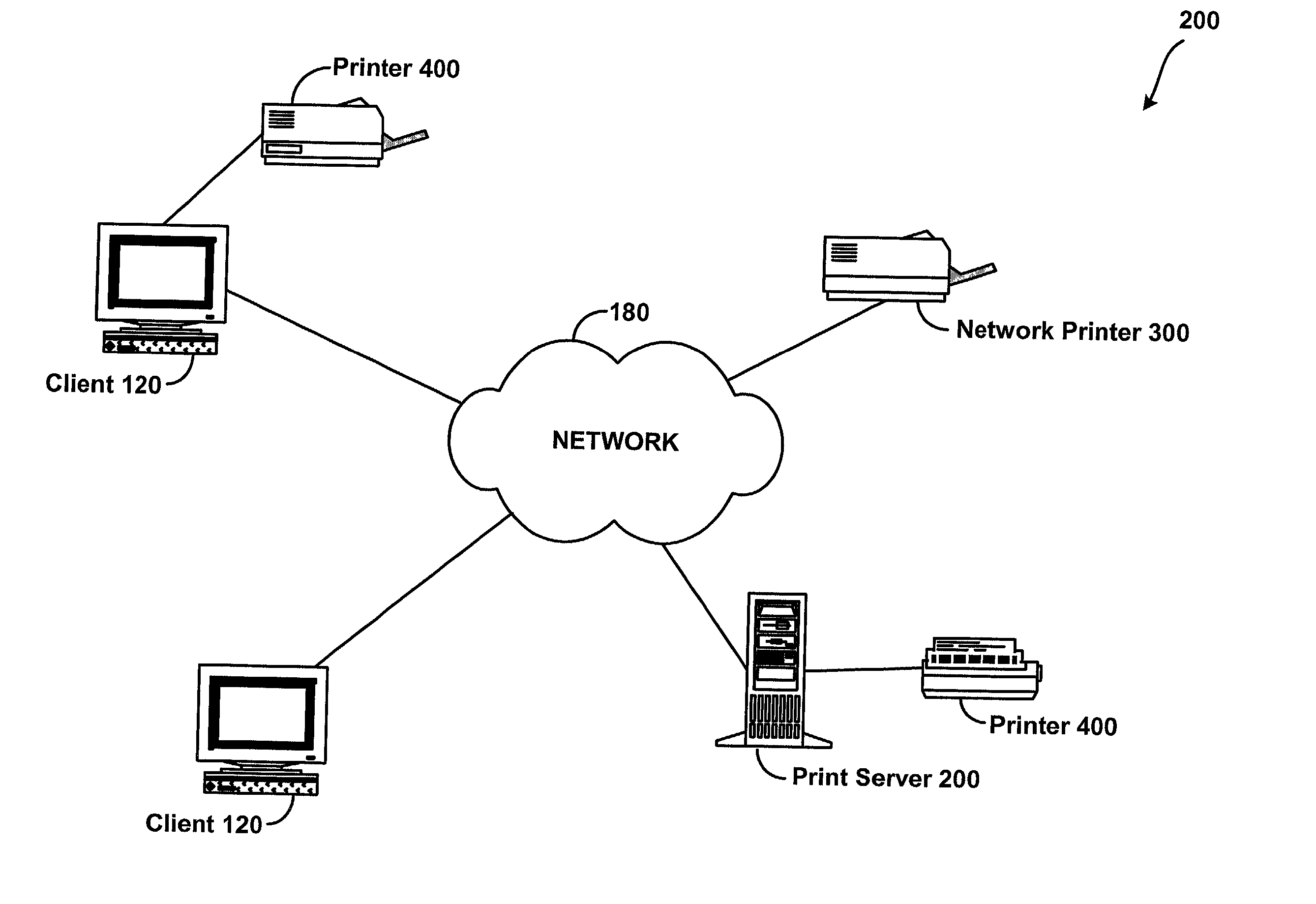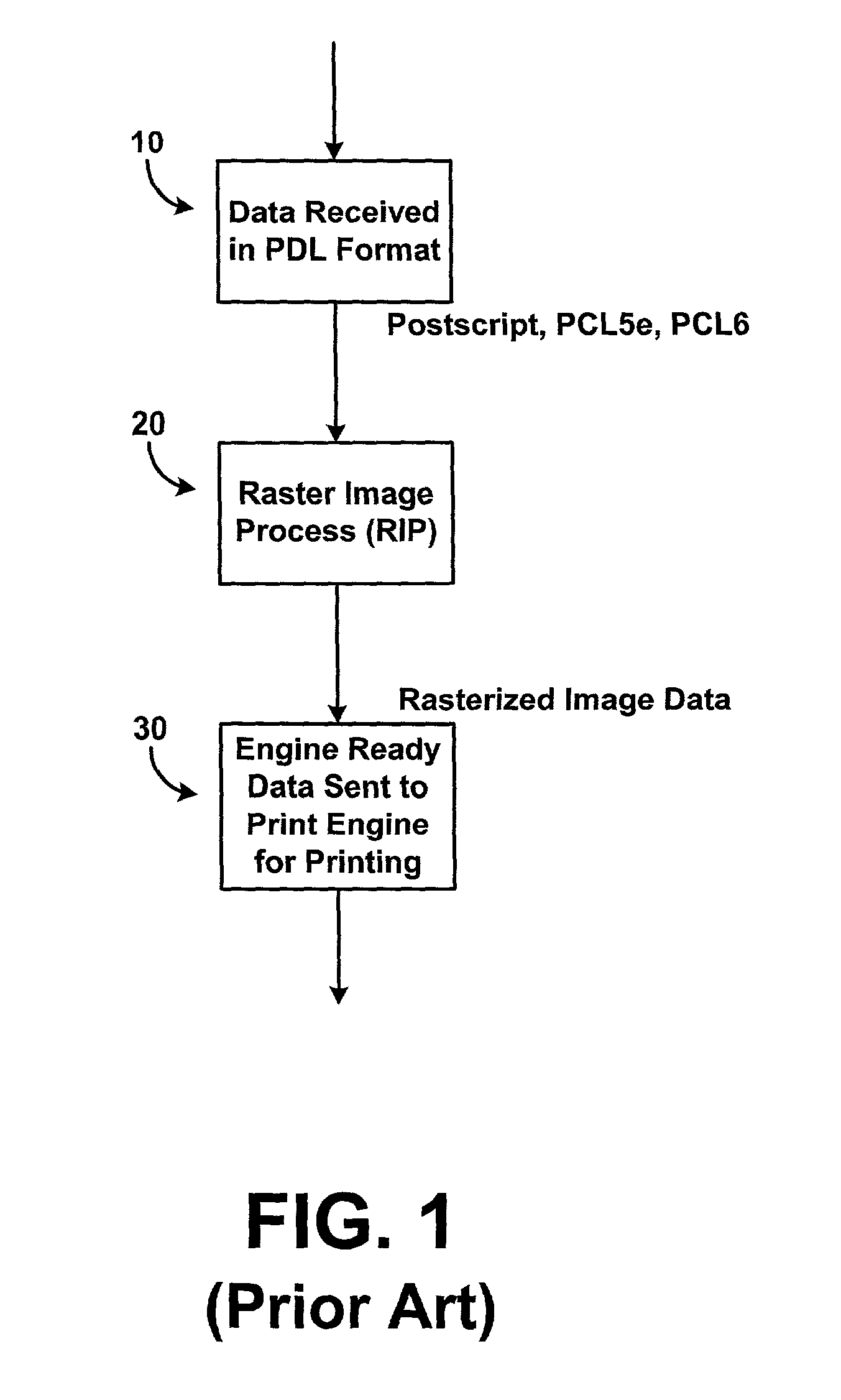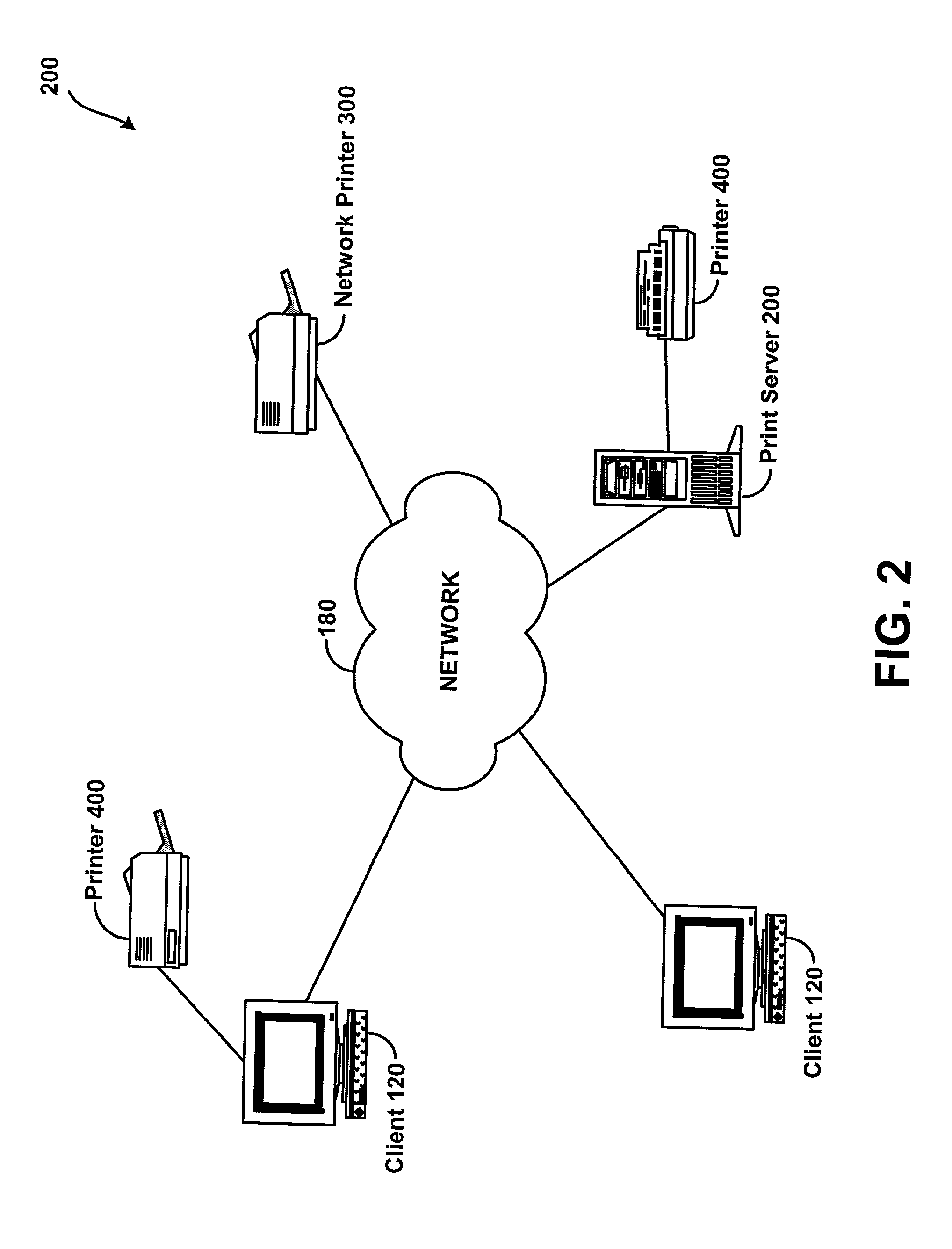Image data caching
a technology of image data and caching, applied in the field of printing, can solve the problems of large amount of mathematical computation and processing power, time-consuming image information processing, and image information generated by computing devices, and achieve the effect of reducing the cost of printing
- Summary
- Abstract
- Description
- Claims
- Application Information
AI Technical Summary
Problems solved by technology
Method used
Image
Examples
Embodiment Construction
[0024]As will be described in greater detail herein, image data caching systems and methods of the invention can potentially reduce the amount of time typically associated with rasterization of image data when the image data is to be printed. In some embodiments, this can be accomplished by caching rasterized image data so that it is readily retrievable when information corresponding to a request for printing is received. In particular, when image data, such as PDL or graphic image data, is received, a search for corresponding rasterized image data can be conducted. If rasterized image data is not found, the received image data can be rasterized and then stored and / or cataloged for later use. If, however, rasterized image data is found, the rasterized image data that was found can be used for printing. In this manner, the workload of the Raster Image Processor (RIP) can be reduced, thereby potentially increasing the overall speed of the printing process.
[0025]FIG. 2 is a depiction o...
PUM
 Login to View More
Login to View More Abstract
Description
Claims
Application Information
 Login to View More
Login to View More - R&D
- Intellectual Property
- Life Sciences
- Materials
- Tech Scout
- Unparalleled Data Quality
- Higher Quality Content
- 60% Fewer Hallucinations
Browse by: Latest US Patents, China's latest patents, Technical Efficacy Thesaurus, Application Domain, Technology Topic, Popular Technical Reports.
© 2025 PatSnap. All rights reserved.Legal|Privacy policy|Modern Slavery Act Transparency Statement|Sitemap|About US| Contact US: help@patsnap.com



